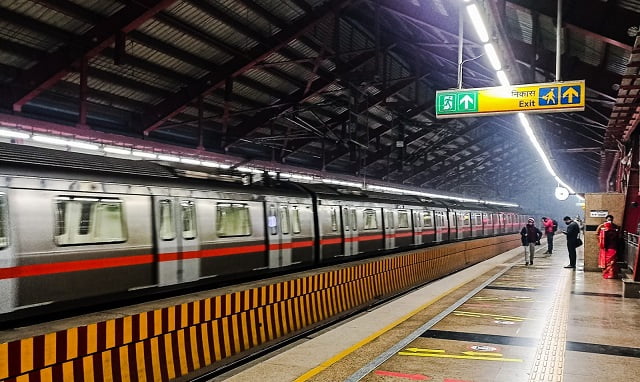Life In A (Delhi) Metro

New Delhi: Commute is the great leveller, whether you are a factory worker in Mumbai, or a techie living in Delhi-NCR, unaffordable rents push you to the fringes from where the only lifeline is the Metro or the local train. As a small towner till I turned 30, this was life I could neither relate to nor understand.
But COVID-19 has revealed to us so many unfamiliar worlds and changed our thinking or ways in which we accept life and living.
From our rented accommodation in Delhi, my family moved to Ghaziabad, a choice that seemed logical since we had a matchbox 2BHK to call our own and everyone was working from home anyway. The lure of escaping the clutches of South Delhi landlords seemed hard to resist.
So last year, we turned ‘homeward’ to Ghaziabad, not really NCR, but the heart of the city, a small island of greenery, surrounded by the industrial belt, the dust bowl, the clutter of apartments and malls, what the rest of the district is.
Our lives were similar to what most people went through, the nightmare of COVID-19 with every family member infected, the slow recovery and getting back to the rhythm or the lack of it in our WFH lives.
Then the shuttered city started sputtering back to life, the wheels of the transport leviathan turned once again, and commuters rushed in without missing a beat.
This time, I joined their ranks, the ranks of millions of workers the world over, travelling long distances to get to the workplace and then back home to their loved ones or to bare rooms.
Dawn no longer was 7, but 4.30 am, and the time to head out with workaday tools — bag loaded with laptop, tablet, charger, phone, food, drink was pushed back from 7.30 to 6 am sharp, when the sky was pitch dark, and the North winds icy as you stepped into the balcony.
Yet, nothing seems to beat the energy of early mornings or what our sages called ‘Brahmamuhurtha’ or the ambrosial hour. A time when authors like Khushwant Singh chose to write or sages to meditate, commuters prepare to forge ahead, parting the dank fog with the warmth of their breath and the toil of their life-force.
My commute from Ghaziabad to South Delhi is bridged by Delhi Metro. The commuter crowd that greets me at the Shaheed Sthal station is almost like validation that all is well, a solidarity that come what may, the wheels of life and work will turn.
Perhaps our ancestors understood this, and built grand temples to remind us. The rathas, the Sun Temple at Konark with its exquisitely carved wheels depicting life and love in all its forms come to the mind. As we come and go, the wheels of life will turn bringing new generations to their destination.
Among the many stations that my commute takes me through is Kashmere Gate. Right before it, is the Nigambodh Ghat, on a wide expanse of the Yamuna. From my coach, I drowsily catch a glimpse of daybreak over its placid waters, a temple and a sudden flight of pigeons — reminiscent of the death scene of Apu’s father in Benares in Aparajito. Satyajit Ray captured pigeons taking flight on the banks of the Ganga in Benares, the moment the father draws his last breath.
The Nigambodh Ghat is believed to date back to the time of the Mahabharata perhaps bringing soldiers of the great battle to their final destination after their ‘commute’ through life fighting battles that perhaps they or even we find impossible to understand.
The author is a commuter, teacher and writer based in Ghaziabad.

Comments are closed.